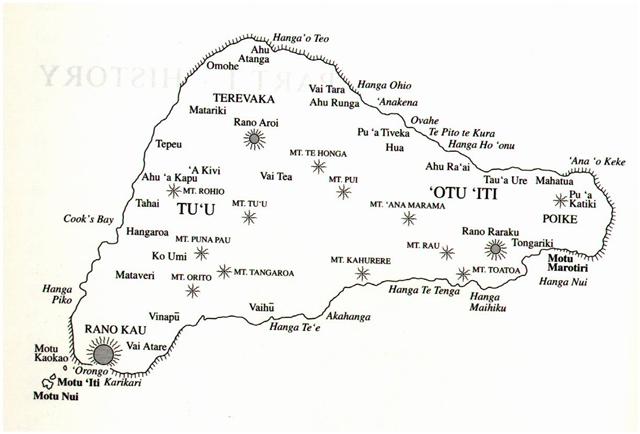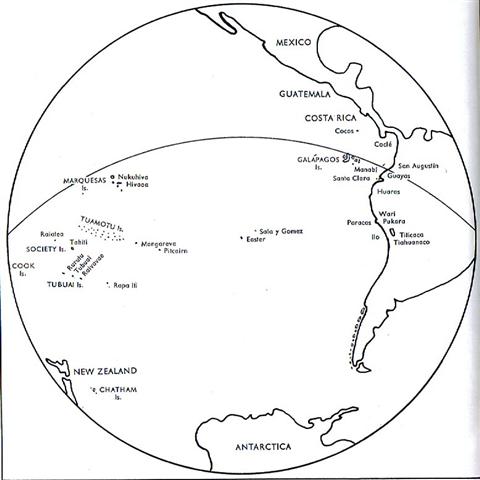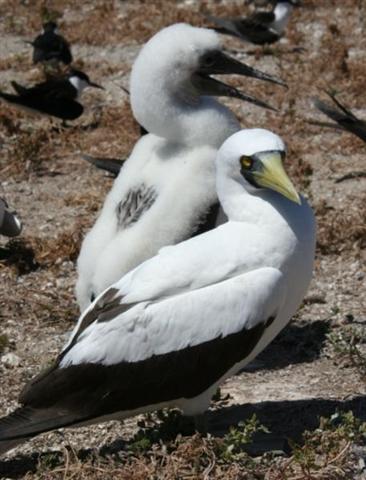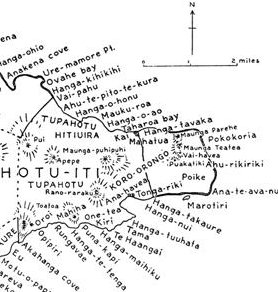5. 'Uphill' on Easter Island must have been in the northeast and we can compare with the Indian subcontinent. At the other end both lands taper off 'downwards' into a seemingly limitless sea:
The sea is empty, has no land, beyond the southwestern corner of Easter Island:
This map (from Thor Heyerdal et al. Reports of the Norwegian Archaeological Expedition to Easter Island and the East Pacific.) shows not only the extraordinary stretch of empty ocean southwest of Easter Island but also how the South American continent tapers off to the south in a similar manner as India. Thus the beginning of the year on Easter Island was at Ana-kena, in the center of the northeastern coast (cfr at Tiamat):
From there Sun ought to move towards the southwest. Rano Aroi could correspond to the apex of his path ('noon'), because Sun should encounter 2 holes (he should 'die' twice), the first when he is at his strongest and the second when he is old and feeble.
The half-circle at noon (below the Serpent) looks like Sun sinking down at the horizon in the west, and it is where the cap (Ç) changes into a cup (È), cfr at Tamaiti. The strong Sun child has grown up and reached his initiation and there he is cut down to the demands of society. He must be properly 'cooked', not half raw (parehe):
... Maunga Parehe is the last of the 3 cones and here time could be broken, here the season of Sun could begin ... In the G text we can assume winter solstice - the cave from where the Sun bird, kena, is rising - to correspond to glyph number 403:
The general disposition of Gb2-16 agrees with that in Gb6-20:
But instead of a central raaraa sign there is a pu sign, and instead of straight lines on both sides there are curved 'rivers'. Instead of 3 + 3 = 6 'pearls' on strings there are 4 + 2 'berries' on short 'stalks'. I guess Gb2-16 represents the 'place of birth' of a 'person' who is in every respect the opposite of Spring Sun. 403 - 272 = 13 * 10 + 1. |









